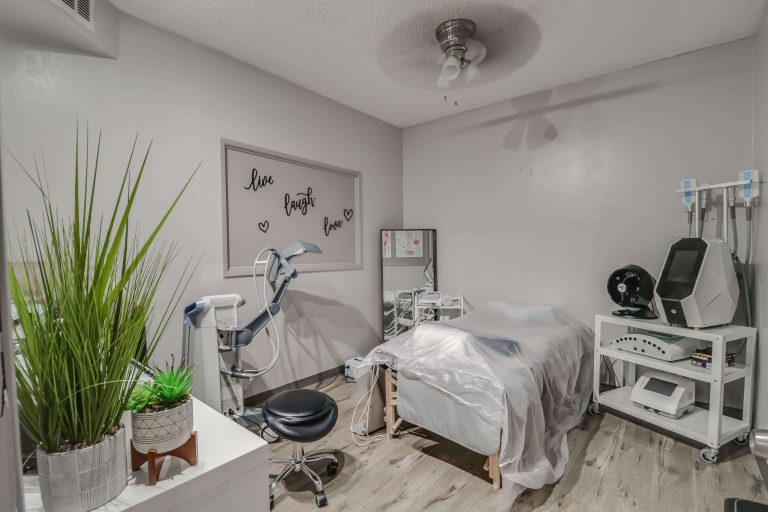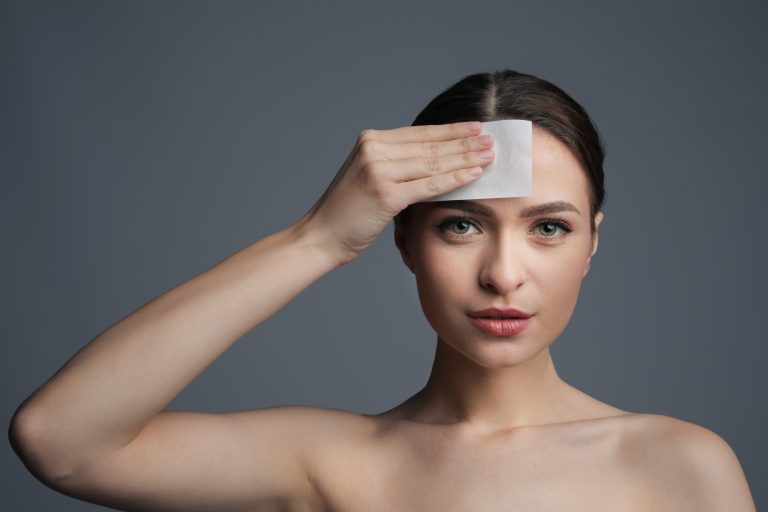What is Restylane, and how does it work?
Posted on: February 23, 2024
Restylane, a renowned brand in the world of cosmetic enhancements, offers a solution for those seeking to rejuvenate their appearance. This hyaluronic acid-based filler is designed to smooth wrinkles, sculpt lips, and restore facial volume with precision. Its popularity stems not only from its effectiveness but also from its safety profile, making it a go-to choice for individuals aiming to achieve natural-looking results without undergoing invasive procedures. As we delve deeper into the benefits and applications of Restylane, it becomes clear why this treatment has gained such acclaim in aesthetic medicine.
Understanding Hyaluronic Acid in Restylane
Natural Substance
Hyaluronic acid is crucial for maintaining skin moisture. It’s naturally found in our bodies. When used in skincare, it helps keep the skin plump and hydrated.
Restylane uses a synthetic version of this substance. This makes treatments safe and effective for adding volume to the skin. The synthetic hyaluronic acid closely mimics the natural one, ensuring compatibility with human tissues.
Skin Rejuvenation
Restylane offers various formulations to meet different needs. Each targets specific areas like lips, cheeks, or wrinkles around the mouth.
- Lip Volume: Increases fullness and defines lip contours.
- Cheek Enhancement: Adds volume to cheeks for a youthful appearance.
- Fine Lines: Smoothens out fine lines around the mouth and eyes.
These options allow customization based on individual concerns and desired outcomes. The versatility of Restylane formulations makes it a popular choice for those looking to rejuvenate their appearance without invasive surgery.
The key benefits include immediate results, minimal downtime, and long-lasting effects up to 18 months after treatment. However, some might experience mild side effects such as redness or swelling at injection sites.
How Restylane Works in Cosmetic Procedures
Skin Injection
Restylane is injected directly into the skin. This process targets wrinkles and fine lines. It’s a quick method used by professionals.
The injection adds volume and smoothens the skin. Patients see immediate improvements in their appearance. The results can last for months, depending on individual factors.
Water Binding
This filler binds water molecules within the skin. This action enhances facial fullness effectively.
By attracting and holding water, Restylane boosts hydration. This leads to a more youthful look over time.
Target Areas
Restylane is versatile and can be applied to various facial areas.
- Lips
- Cheeks
- Around the mouth
These are common sites for enhancement with Restylane. Each area benefits differently from the treatment.
For example, lips gain volume while cheeks get lifted subtly. Wrinkles around the mouth become less noticeable after treatment.
In some formulations of Restylane, lidocaine is included to ease discomfort during injection. Lidocaine makes the procedure more comfortable for patients by numbing treated areas temporarily.
To summarize, Restylane offers a multifaceted approach to cosmetic improvement through direct injections that add volume and reduce wrinkles, binding water molecules for enhanced fullness across several key facial regions including lips, cheeks, and around the mouth—with lidocaine ensuring patient comfort during procedures.
Immediate Effectiveness and Duration of Results
Visible Outcomes
Restylane offers immediate results. Patients often see changes right after treatment. This is a big advantage for those seeking quick enhancements.
The effects are visible because Restylane fills in wrinkles or adds volume instantly. For example, it can reduce the appearance of hollowness under the eyes immediately.
Lasting Impact
The duration of Restylane’s results varies. Typically, they last between 6 to 18 months. The treated area plays a significant role in this longevity.
Factors such as individual metabolism and lifestyle choices also influence how long the effects last. Activities that speed up metabolism or exposure to UV rays might shorten this period.
- Metabolism rate
- Sun exposure
- Exercise intensity
These elements contribute to the breakdown of Restylane over time.
Ideal Candidates for Restylane Treatment
Adult Applicants
Adults seeking to diminish facial wrinkles and folds find Restylane treatment particularly beneficial. This injectable filler targets areas of skin laxity and fine lines, offering a smoother appearance. Suitable candidates often have noticeable nasolabial folds or perioral wrinkles that they wish to minimize.
Restylane is also effective in enhancing the volume of facial tissue, such as in the lips or cheeks. It’s an option for those looking to achieve specific aesthetic goals related to facial volume without undergoing surgery.
Realistic Expectations
Individuals with realistic expectations about cosmetic enhancement are more likely to be satisfied with their Restylane treatments. Understanding that while improvements will be noticeable, perfection is unattainable is crucial. These treatments can significantly reduce signs of aging but won’t stop the aging process entirely.
Prospective patients should discuss their aesthetic goals with a healthcare provider beforehand. This ensures both parties have a clear understanding of achievable outcomes.
Safety Considerations
- Not recommended for pregnant or breastfeeding women.
- Individuals allergic to any ingredients in Restylane should avoid this treatment.
Consulting with a medical professional prior to receiving injections helps identify any potential risks based on personal health history.
Maintenance and Top-Up Appointments
Follow-Up Treatments
After deciding that Restylane is right for you, it’s crucial to consider the journey ahead. Follow-up treatments are necessary to maintain the effects of your initial procedure. Each patient’s skin responds differently, making personalized treatment plans essential.
Regular check-ins with your doctor help ensure your results remain consistent. They can adjust your treatment based on how your skin ages or reacts over time. These appointments are more than just touch-ups; they’re an ongoing partnership between you and your skincare professional.
Appointment Intervals
How often should you return for a top-up? The answer varies from person to person. Some factors include:
- The area treated (lip augmentation may require different care than midface corrections).
- Your body’s response to the filler.
- Lifestyle and aging process.
Typically, patients come back every 6 to 12 months. However, during consultation, doctors assess each case individually. They consider the patient’s history with cosmetic treatments and their desired outcome.
To keep up with the changes in your face and skin over time, regular assessments are recommended. This ensures that any adjustments needed can be made promptly.
Pre and Post Care Instructions
Before Treatment
Before undergoing Restylane procedures, it’s crucial to prepare your body. This preparation helps minimize potential side effects like bruising or swelling.
Avoid certain medications and supplements at least a week before your appointment. These include aspirin, ibuprofen, and vitamin E. They can thin your blood, increasing the risk of bruising.
Also, steer clear of alcohol for 24 hours before treatment. Alcohol can also increase bruising risks.
After Procedure
After getting Restylane injections, follow specific care instructions to ensure the best results and comfort during recovery.
Firstly, minimize exposure to sun and heat for at least 72 hours post-procedure. UV rays can worsen swelling or redness in treated areas.
Use ice packs on the treated area if necessary. Ice helps reduce swelling by constricting blood vessels.
- Avoid strenuous exercise for 24 hours.
- Do not apply pressure or massage the treated areas unless instructed by your provider.
These steps complement maintenance strategies discussed earlier under “Maintenance and Top-Up Appointments.” They aim at preserving the filler’s effect while ensuring safety throughout the healing process.
Side Effects and Safety Considerations
Common Side Effects
Restylane treatments, like any medical procedure, come with potential side effects. Redness, swelling, and bruising at the injection sites are among the most common. These reactions are typically mild and resolve within a few days.
Patients may experience discomfort during or after the treatment. Applying ice can help reduce swelling and alleviate pain.

Rare Complications
Though less common, some individuals might face more serious complications such as infections or allergic reactions. Symptoms of an infection include increased redness, warmth at the injection site, or fever. Allergic reactions can manifest as hives, difficulty breathing, or swelling of the face and lips.
To minimize these risks, it’s crucial to disclose all allergies and current medications during your consultation.
Choosing a Practitioner
Selecting a qualified practitioner is paramount for ensuring safety and minimizing risks associated with Restylane injections. Look for professionals who have extensive experience in administering dermal fillers.
Ensure that your chosen practitioner operates in a clean environment to reduce the risk of infections. They should also provide comprehensive pre- and post-care instructions to support your recovery process.
Closing Thoughts
Restylane stands as a pivotal advancement in the field of cosmetic procedures, offering individuals a safe and effective means to address aging concerns. Through its utilization of hyaluronic acid, it ensures immediate enhancements with results that speak volumes about its efficacy. Ideal candidates can expect a transformation that not only boosts their appearance but also their confidence. Maintenance sessions further extend these benefits, making it a sustainable option for those seeking long-lasting improvements. However, awareness about pre and post-care instructions, alongside understanding potential side effects, is crucial for ensuring the safety and success of the treatment.
The journey towards rejuvenation with Restylane requires informed decisions and adherence to recommended care practices. For those considering this path, consulting with certified professionals who specialize in Restylane treatments can provide tailored advice and optimal outcomes. Embrace the opportunity to enhance your natural beauty by exploring what Restylane has to offer.
Frequently Asked Questions
What is Hyaluronic Acid and why is it important in Restylane?
Hyaluronic acid, a natural substance found in the body, plays a crucial role in Restylane by adding volume and hydration to the skin, making it essential for achieving desired cosmetic enhancements.
How does Restylane work for cosmetic improvements?
Restylane works by injecting hyaluronic acid into targeted areas, instantly filling wrinkles or adding volume. Its ability to integrate with skin tissue allows for natural-looking results.
What can I expect immediately after a Restylane treatment?
Immediate effects include visible enhancement of treated areas. Full results develop over several days as swelling subsides. Duration of outcomes varies but generally lasts 6 to 18 months.
Who are ideal candidates for Restylane treatments?
Ideal candidates are adults seeking improvement in facial wrinkles or volume loss without undergoing surgery. Good overall health and realistic expectations about the outcomes are crucial.
How often should I schedule maintenance or top-up appointments for Restylane?
Maintenance schedules vary; however, most patients opt for follow-up treatments every 6 to 12 months to preserve their desired appearance.
What pre and post care instructions should be followed with Restylane treatments?
Pre-treatment instructions typically include avoiding blood thinners and alcohol. Post-care involves minimizing sun exposure, avoiding strenuous activities initially, and following any specific advice from your healthcare provider.
Are there any side effects associated with Restylane injections?
Common side effects include temporary redness, swelling, bruising at injection sites. Serious complications are rare when performed by a qualified practitioner but can include infection or allergic reactions.




